Queen Street
Queen Street runs right through the town and has undergone many changes through the years. In 1890 it ran from Northgate to Pier Road where it carried on as Hollym Road. By 1910 it was divided into North and South Queen Street at Hull Road, with the south part extending to the Holmpton Road junction.
Each part of Queen Street was seperately numbered from the Hull Road junction.
In 1936 the road was again united as just Queen Street and re-numbered from North to South.
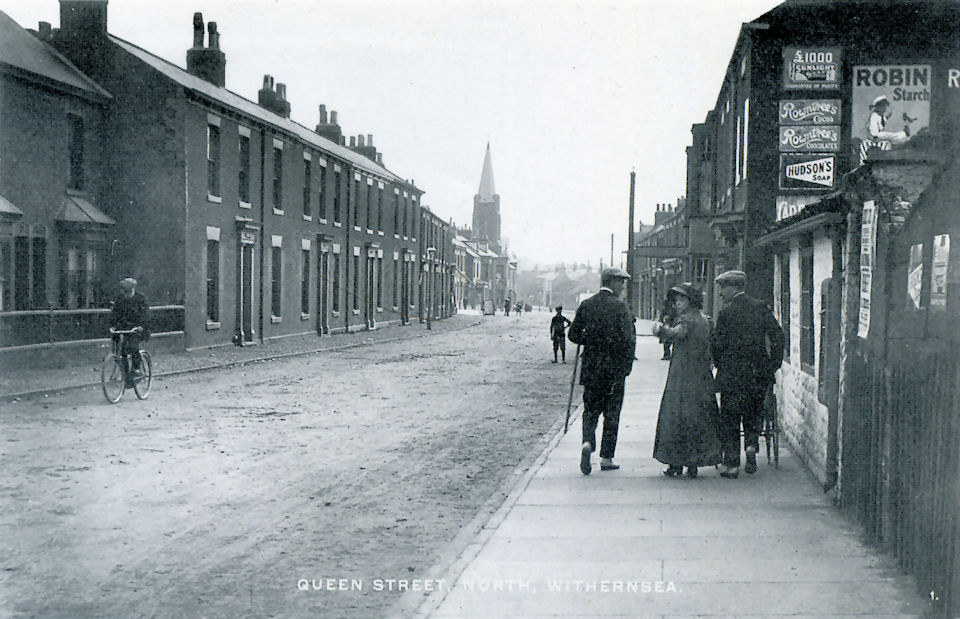
The north end of Queen Street looking south towards the Wesleyan Chapel from what is now Hubert Street.
(From Jack Whittaker)
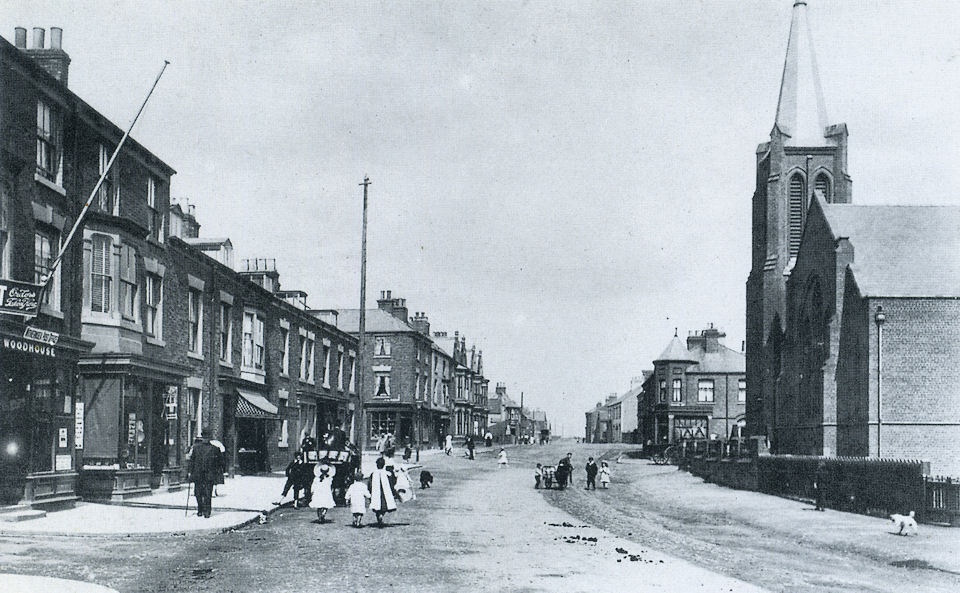
Queen Street North with the Wesleyan Chapel about 1910. (from Jack Whittaker)
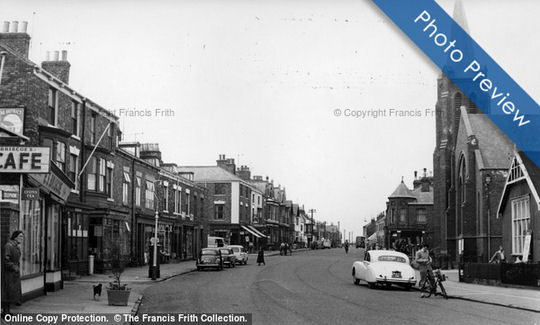
Queen Street North. Similar view to above from about 1960. Reproduced courtesy of Francis Frith.
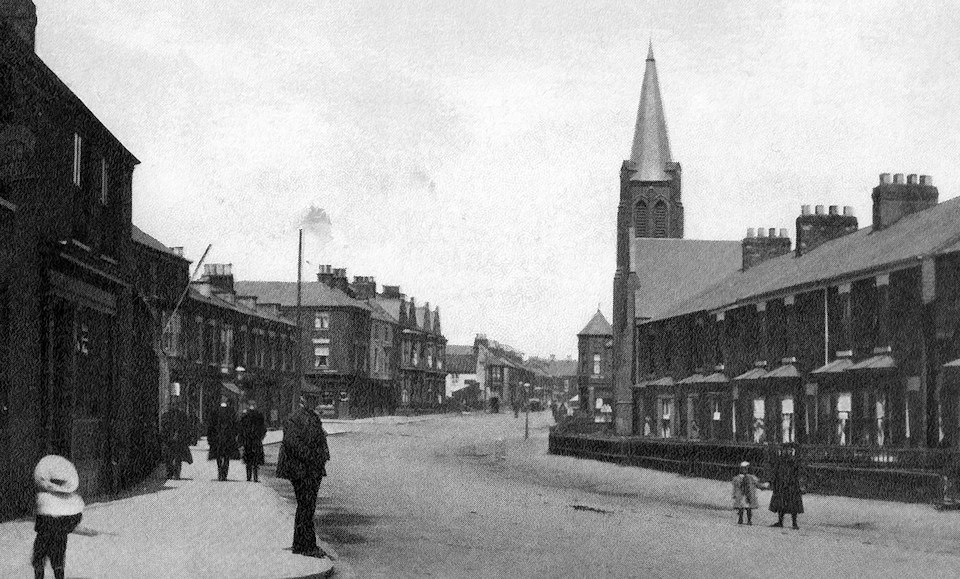
Queen Street looking north from the corner of Hull Road towards the junction of Walter Street.
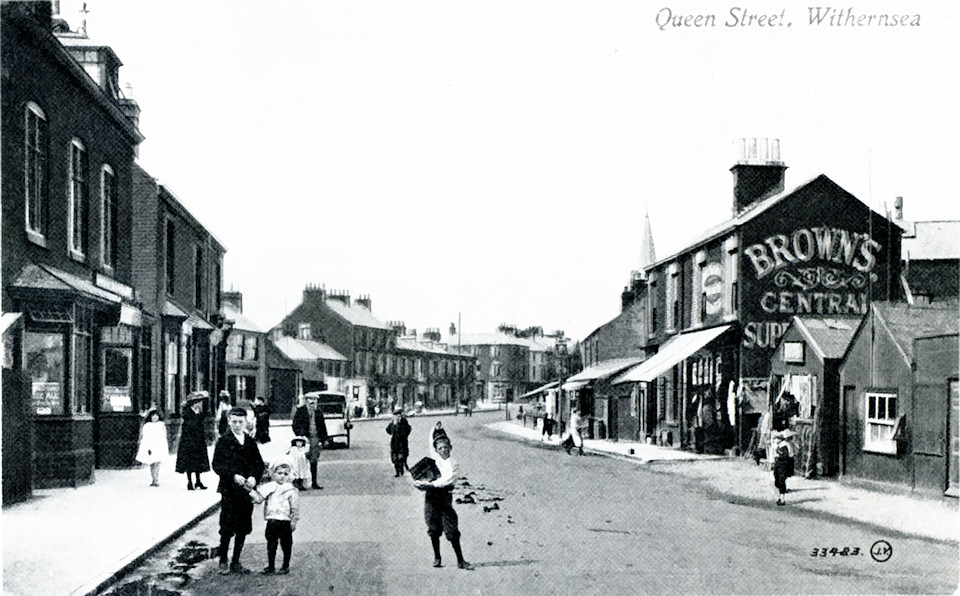
Queen street about 1905. Hull Road junction on the left.
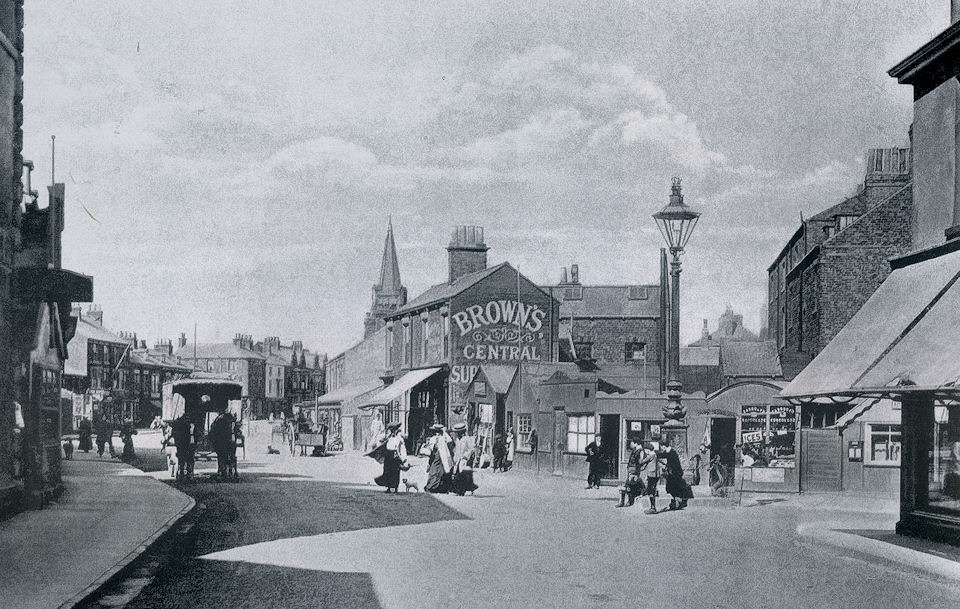
Similar view from a bit further back showing the Jubilee Lamp at the junction with Seaside road. (from Jack Whittaker)
The shop on the extreme right is seen here as milliners, later to become bank premises. Brown's Central supplies is now a supermarket.
The small shaks seen in the centre were demolished and gave way to more permanent buildings including the Nat West Bank.
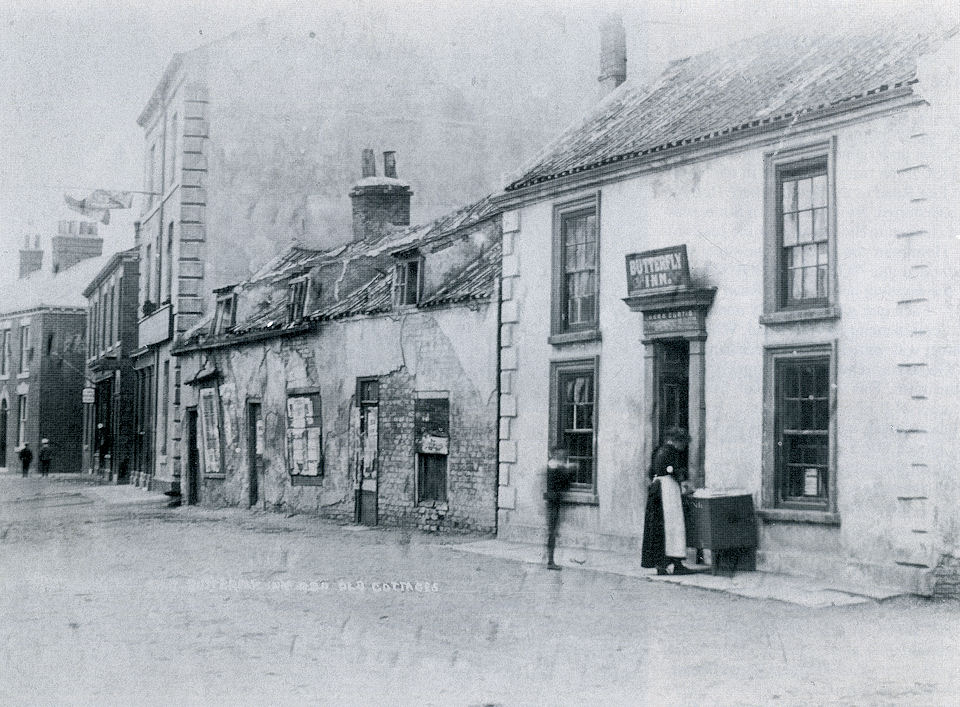
The old Butterfly Inn and old Cottages on Queen Street around 1880. (from Jack Whittaker)
The houses on the far left were jet to be converted to shops, and is now the Army Cadet building. Between the Butterfly Inn and the Alexandra Hotel was a row of old derelict cottages. They were demolished, and around 1905 replaced by more permanet structures.
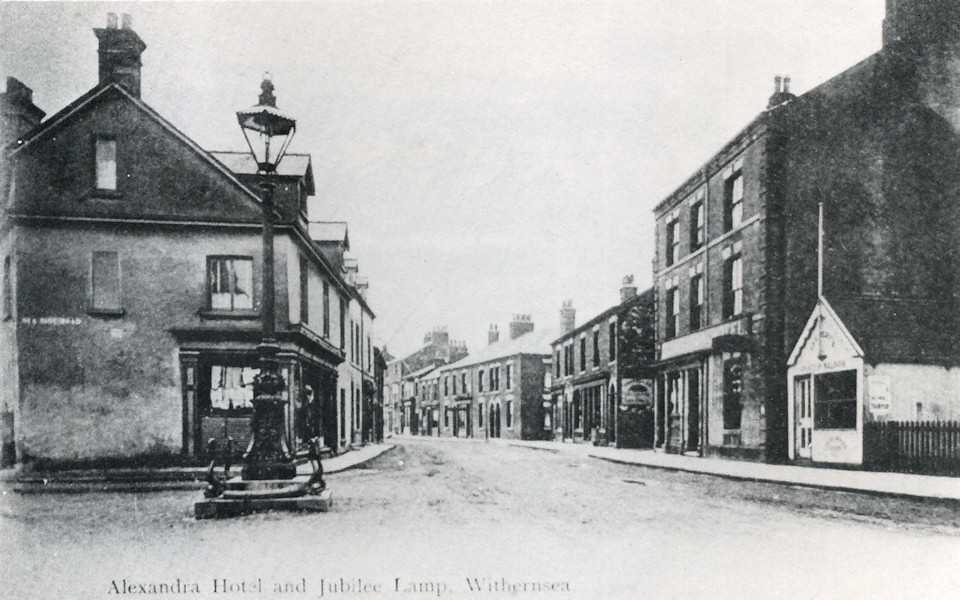
Queen street, north end of town centre about 1900 looking south. Alexandra Hotel to the right, seaside road to the left.
The Jubilee Lamp was erected to commemorate Queen Victoria's Diamond Jubilee in 1897. It was later moved to the pier tower steps,
and is now situated in the Municipal Gardens.
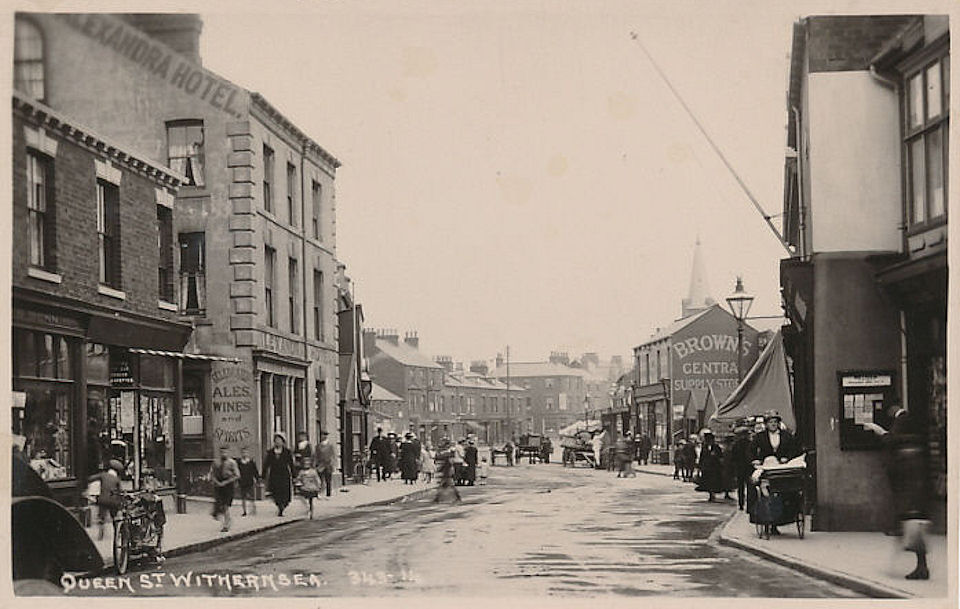
A great view of Queen Street and the Alexandra Hotel around 1910.
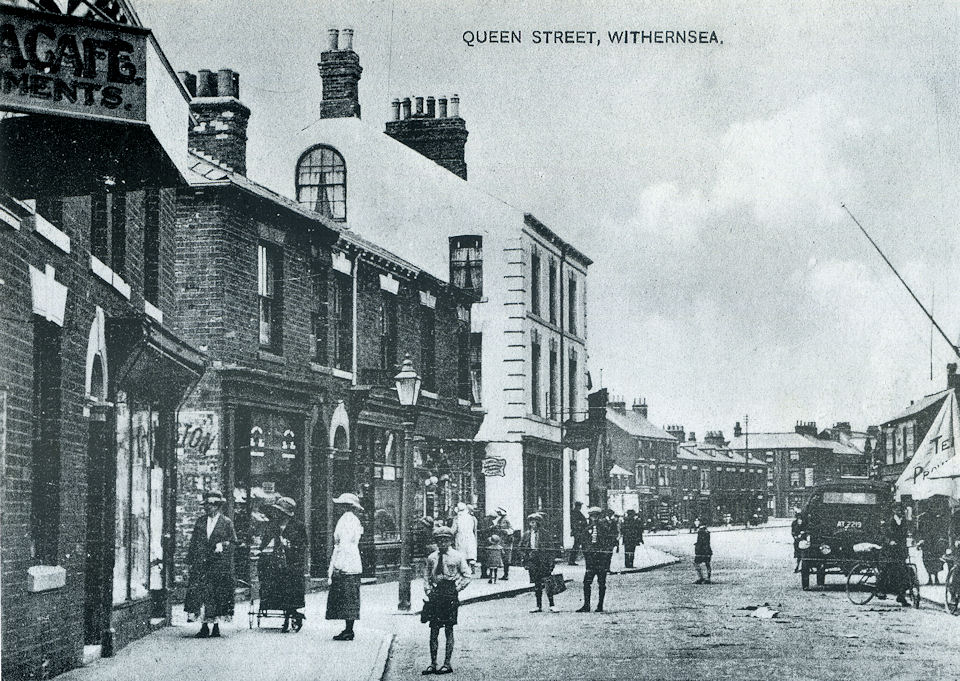
Queen Street with the Alexandra Hotel arround 1920 (from Jack Whittaker)
The gas street lights were replaced by electric lights in 1935.
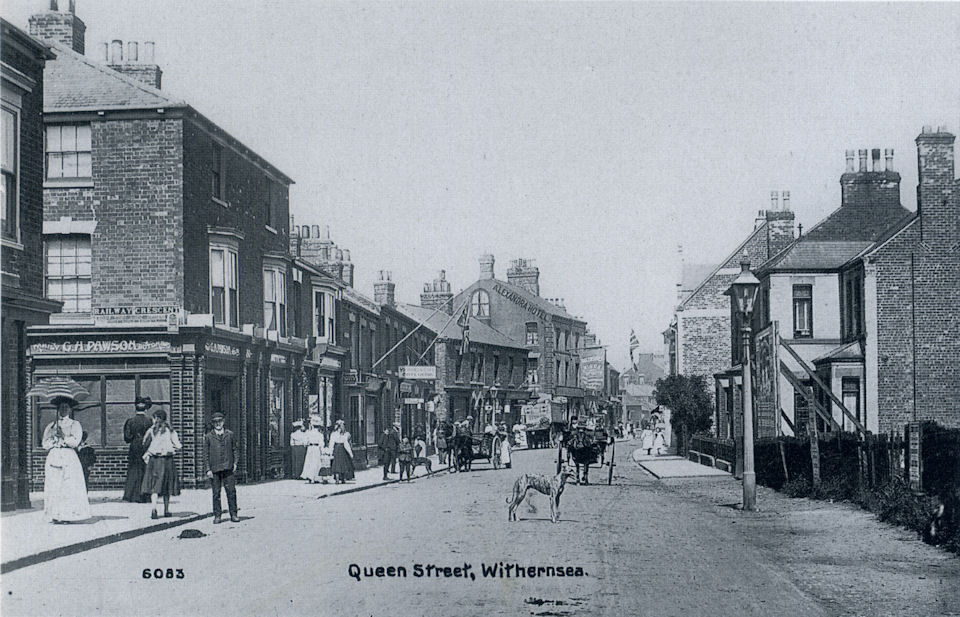
Queen Street, town centre about 1910. Railway Cresent used to be home to the police station and the magistrates court.
The empty space on the right would later become Wolworths. G.H. Dawson's family butchers shop became a victime of the Second world war when it was hit by a bomb.
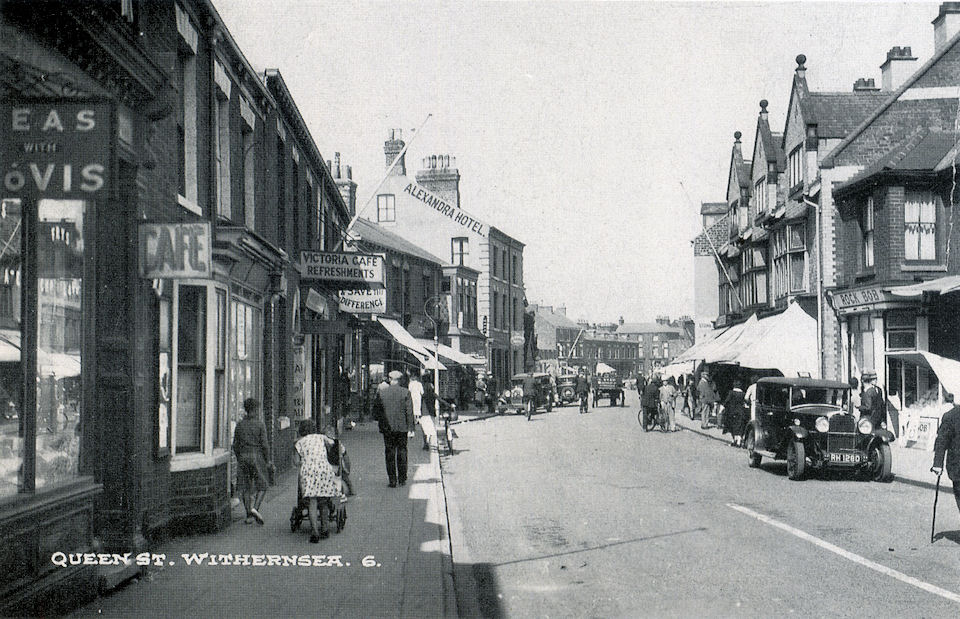
Similar view to above, but about 30 years later, and with notably more cars. (from Jack Whittaker)
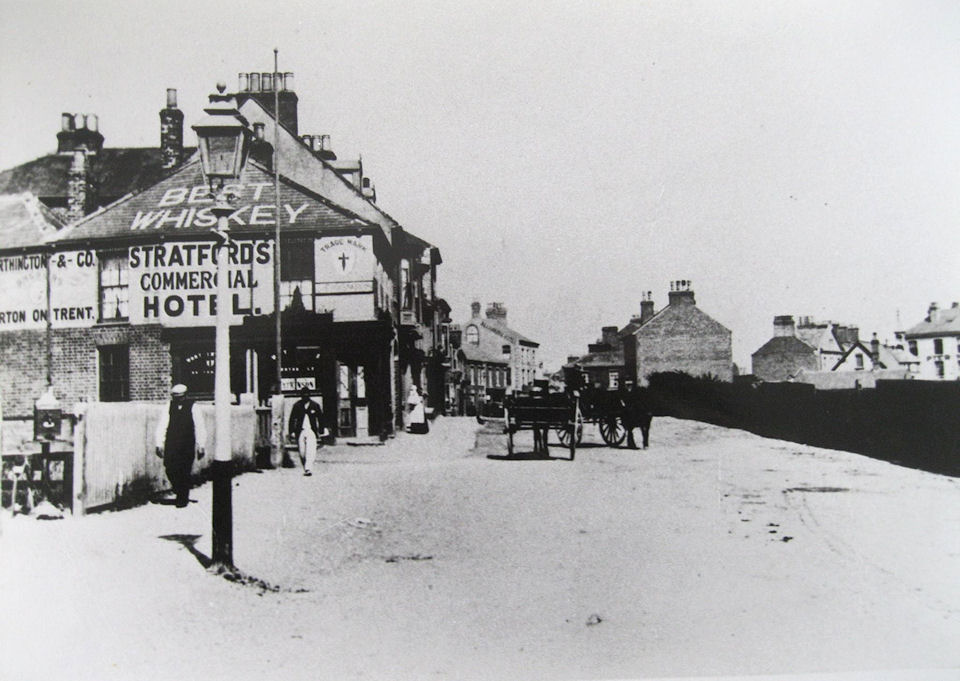
Queen Street before 1910 with hardly any shops on the east side of the road. The Commercial Hotel on the corner of Piggy Lane. (picture from
Paul Baker)
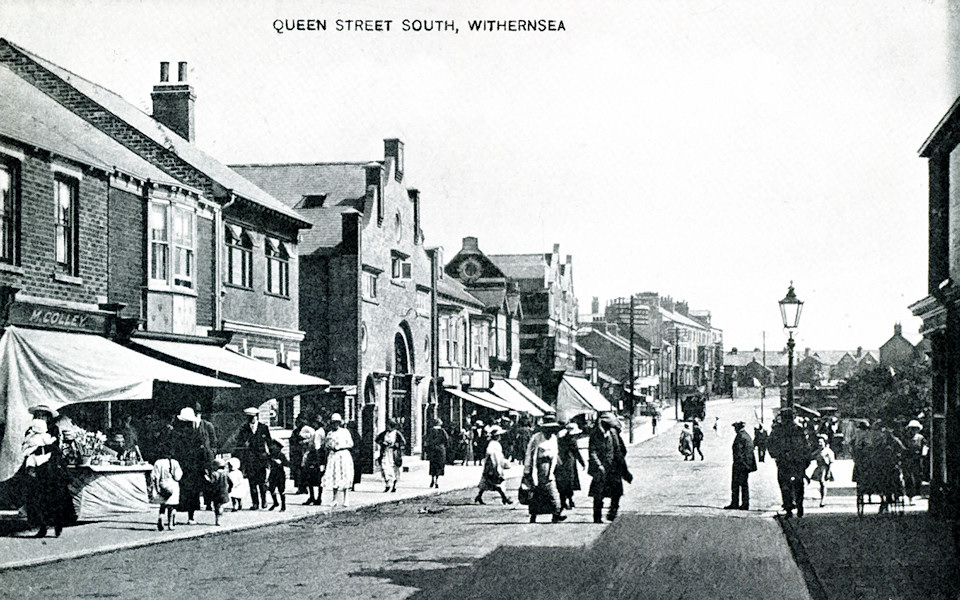
Queen Street looking towards Pier road 1925. The gable building to the left of centre was the cinema complex with the "Kinema" built in the early 1910s and the "Little Kinema" or "Cosy Kinema" added in the 1940s.
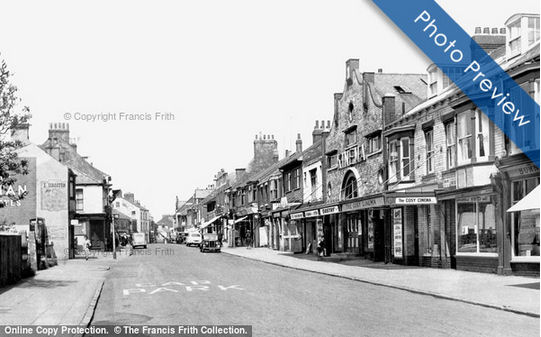
Queen Street Town Centre c1955 Reproduced courtesy of Francis Frith.
The "Kinema" cinema complex can clearly be seen to the right.
It was opened prior to 1934.
It had a 16 feet wide proscenium and was equipped with a British Acoustic(BA) sound system.
The Kinema was still open in 1954, but had closed by 1963. Today it is an amusement arcade.
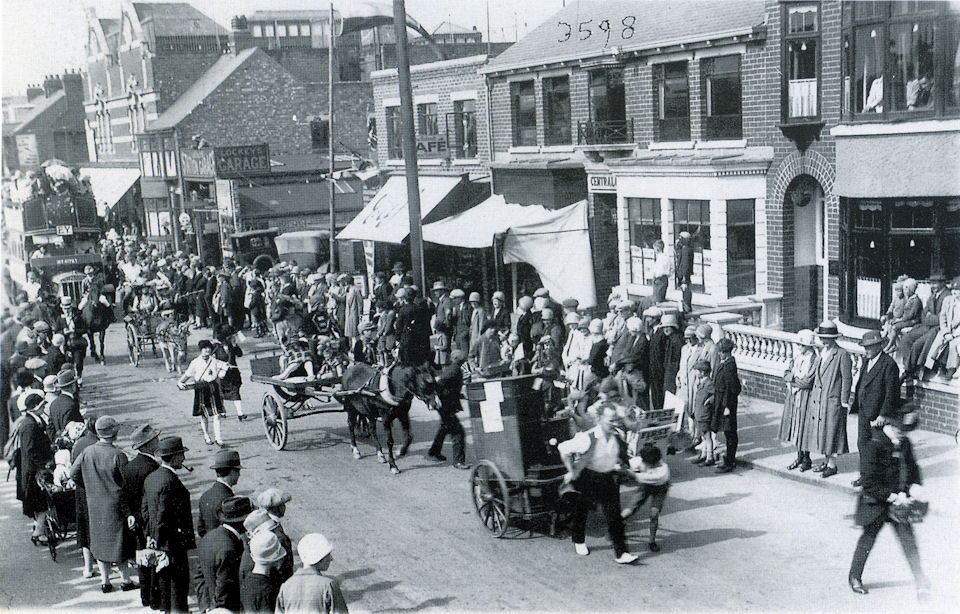
Carneval Parade down Queen Street in 1927 (from Jack Whittaker)
The large building to the left was the Co-operative Store and Unity Hall. Later it had a super store downstairs with Eldon's Night club upstairs. Just to the right is Vin Lockey's Garage. When the garage closed down, the Indoor Market was built in it's place.
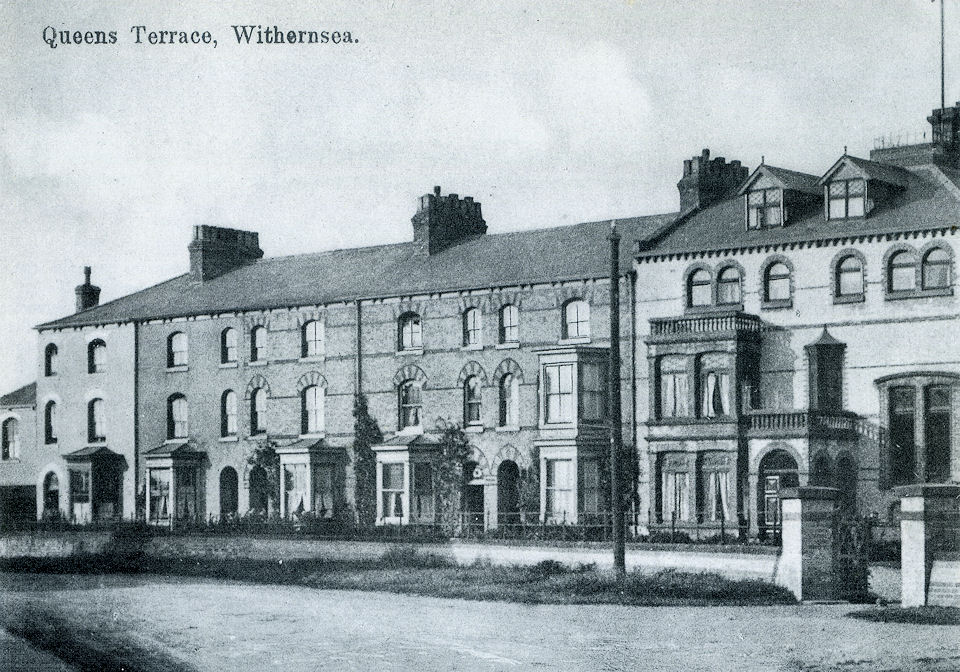
Queens Terrace with the Munical Buildings to the right. (from Jack Whittaker)
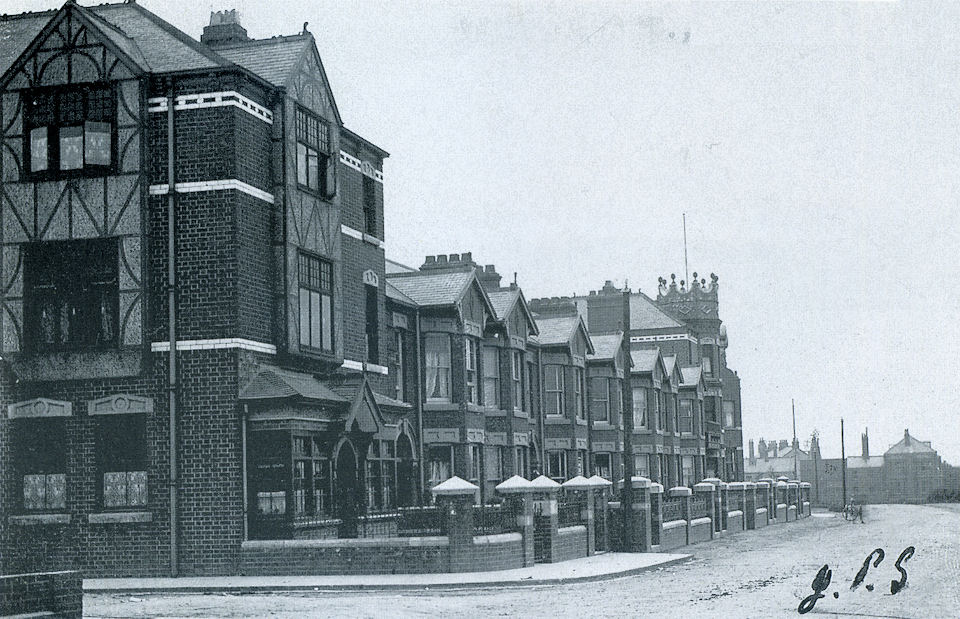
Looking down Queen Street from the corner of High Brighton Street. The Building to the left is the Masonic Hall.
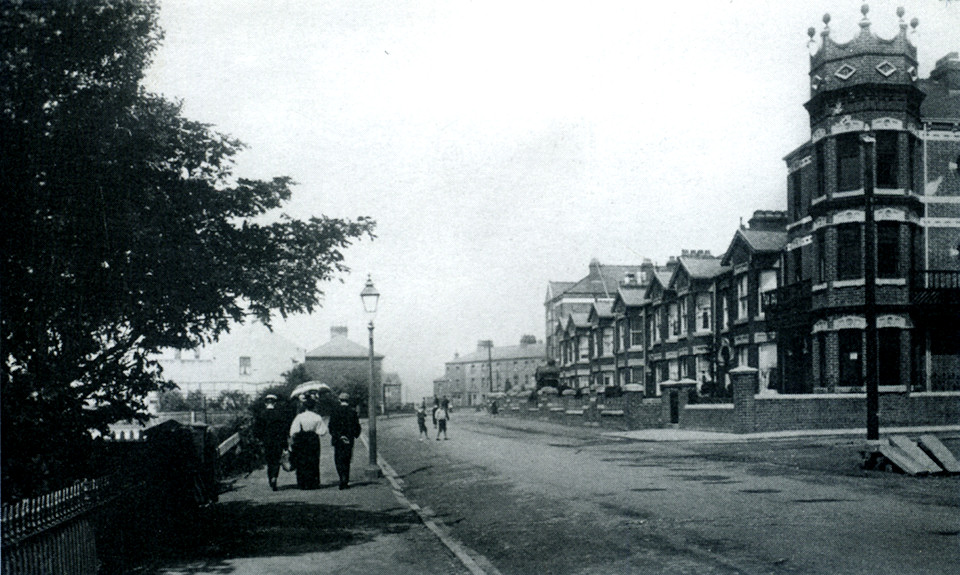
Queen street between High Brighton St and Ceverton Avenue. The terrace of houses on the right was known as Sunny Bank.
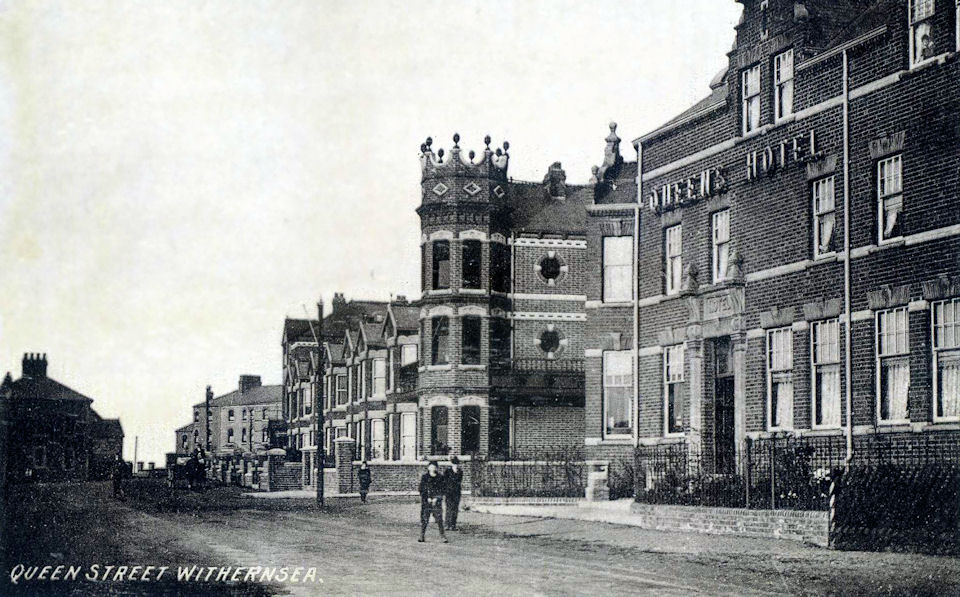
(Picture from Phil Mathison)
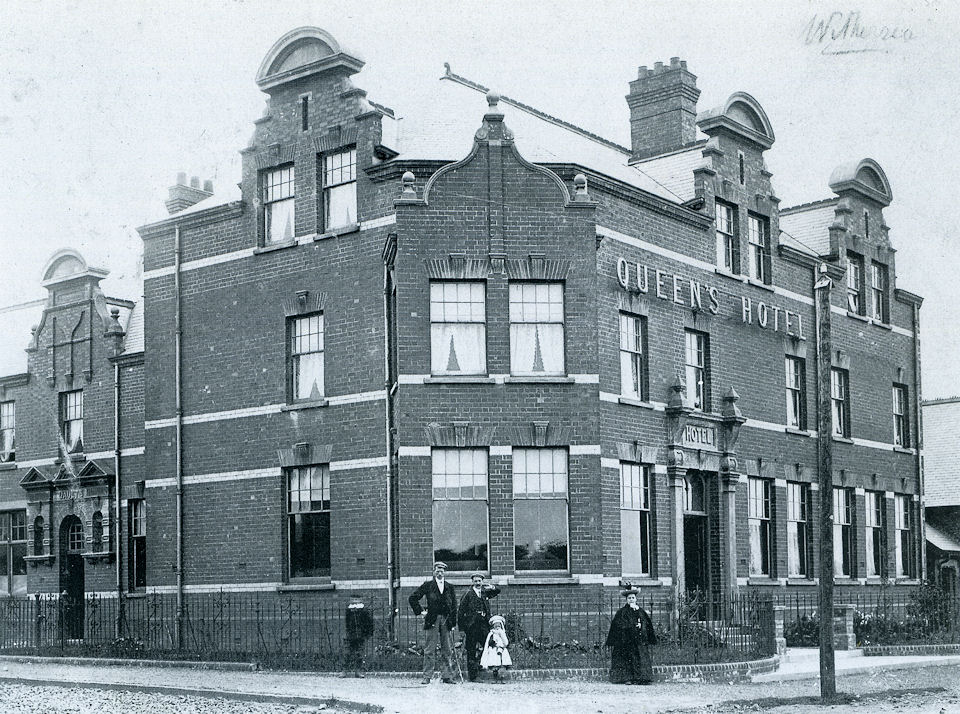
The Queens Hotel, on the corner of Queen Street and Cheverton Avenue (from Jack Whittaker)
This was the second Queens Hotel in Withernsea. The first was built next the the railway station. This massive building was built in 1903 for £7000, although the ballroom was added later. This is now the Queens Residential home.
Go to pictures of Other Streets in Withernsea